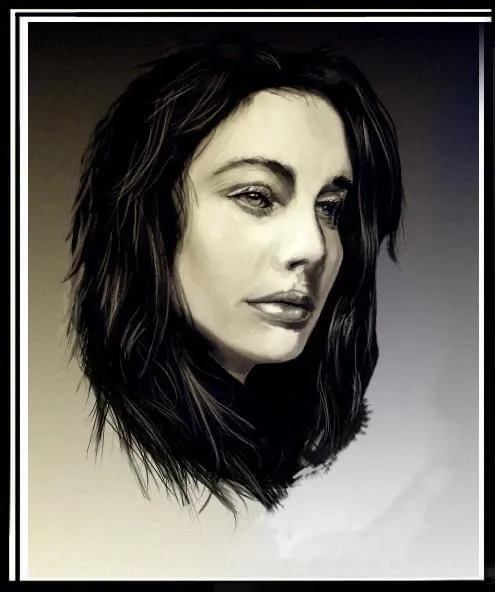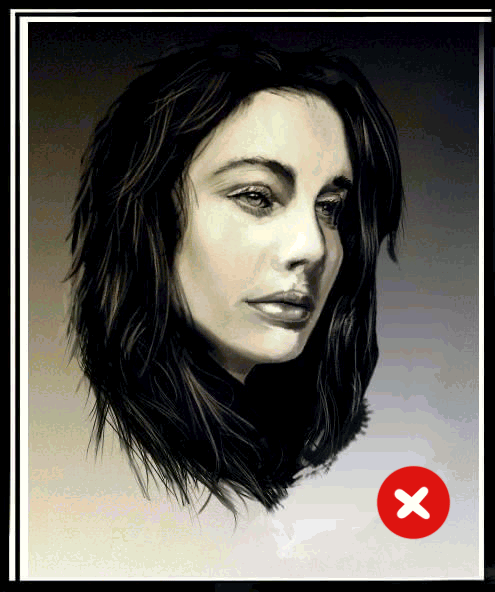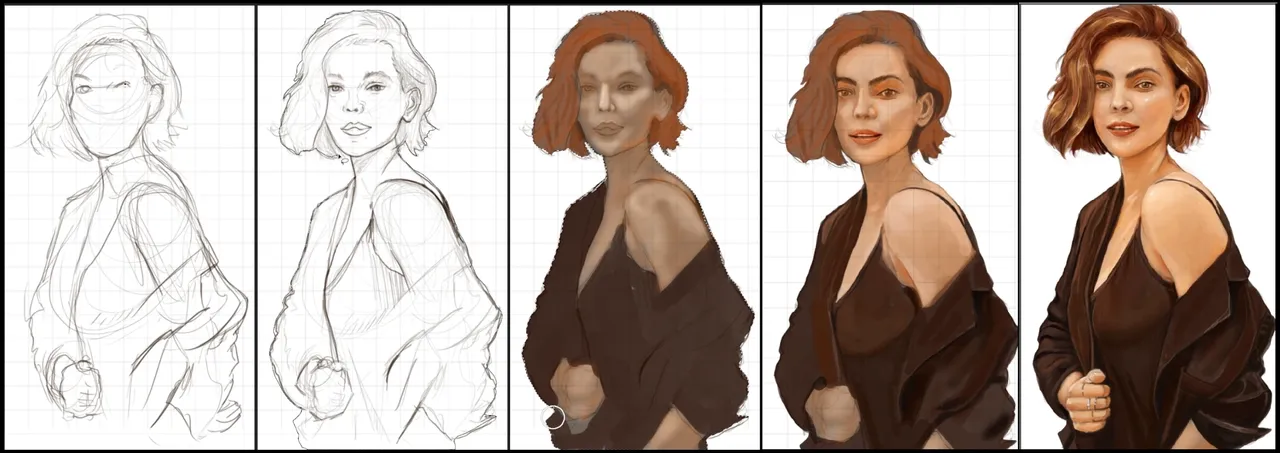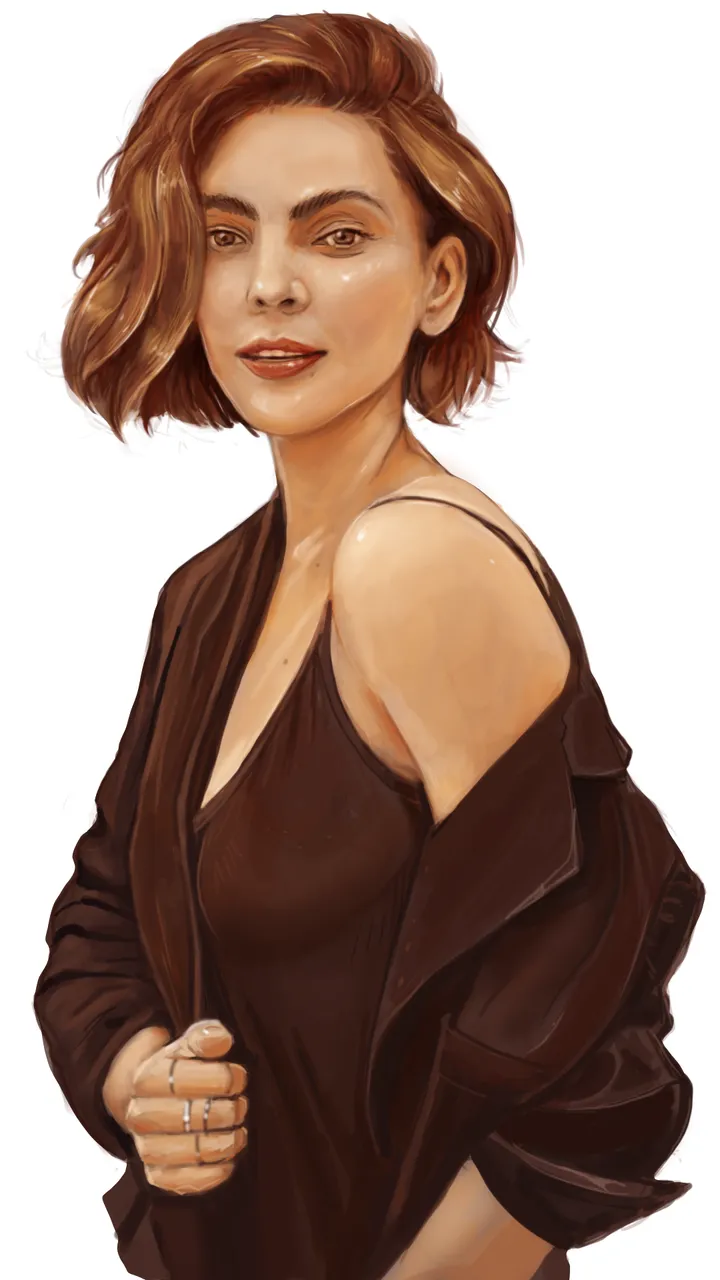Alright people! We're back with a fresh tutorial for all my art peeps out there!
In today`s episode, I wanna discuss Portraits with you guys.
Portraits are far from easy to complete, folks! And there is one simple reason for that:
Humans are VERY good at understanding proportions.
This may sound counterintuitive for many of you, especially non-artists, but believe me. If you feel like your sense of proportion is close to zero. Here is a challenge for you:
Look at this image below for 1 minute. You may find a rush to look away but be strong and try to take this whole minute to analyze it before reading the rest of the post:

"- Well, it sure looks great to me"
That perhaps was your impression in the first few seconds of looking at the image. Rendering nice shadows and lights can really help sell a first impression. But if you're being completely honest with yourself you know that something is not quite right...even if you can't precisely pinpoint WHAT is giving you this eery sensation. Take your time and try looking at all features before you move forward with the post. See if you can pinpoint what is wrong.
The answer
This is my first attempt at one of my very first portraits back in the day (+ 10 years ago!).
EYES - The eyes were very misaligned, with one of the eyes being placed EXTREMELY HIGH in comparison to the other. The distance between them was also pretty much off, with one being super close to the nose while the other was properly placed.
MOUTH - The mouth is not even CENTERED in her face! It is also far too big. My model was asked to sit in a neutral facial expression but somehow I ended up messing so much while painting her lips that it looked like she had this weird smile.
With practice (and some professional orientation) I was able to repaint her and the final version (although carrying only minor detail fixing) ended up being DRAMATICALLY different (and much better) than its previous version:

So what about this Taina Müller study?
Well, Taina is just a famous actress (someone whose facial proportions I am familiar with due to the movies and TV series she acts in) you can check her IMDB profile here. The point of picking a celebrity to study portraits is solely due to the fact that THEIR FACE IS KNOWN. Thus, if you mess up, it is harder for you to sell the idea that your painting was about someone else instead of just being a bad portrait of said celebrity. 😝
Alright, how can we do this?
The first step to understanding proportions is to help your eyes to see the relationship between forms. You need to have a way to ensure your measurements are precise or at least CLOSELY RELATED to your model. The best way I've figured is to draw A GRID as your guideline.
If you click on the image below, you will notice a faint square grid on my canvas. I used this grid on top of my reference image as well. Then I proceed to add lines to the grid that would mimic the contour of my model form. Notice that I was not TRACING over the picture of my model, but truly studying how her proportions would distribute in a grid. I would then try to mimic that same distribution in my own canvas by applying a similar grid.

With a solid linework, I started to evaluate the base colors, their values across the form, and how to balance the painting in a similar way to my reference. Note: I was never picking colors from the reference photo. This is a study! Therefore, use this opportunity to practice your understanding of color and value. 🤓
Nice! What did the end result look like?
There you go! I was pretty satisfied with it even after roughly 2 hours of painting and studying it.

Can we watch your painting process?
Absolutely! I've put together this 4-minute video (actually 3:49 😝) where I share the whole process of this time-lapsed painting with a few comments here and there about the model and my process as I paint. This whole painting was made using Photoshop and my Cintiq16. =)
Final remarks
I hope you appreciate doing studies like this. It is a fantastic way to practice your skills, understand your subject matter, and walk the mile of becoming the best artist you can be.
Looking forward to seeing what you can paint next!
Talk to you guys later!
Best,
Galiant

